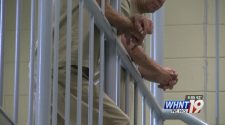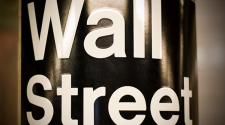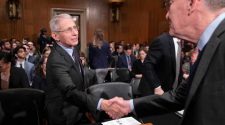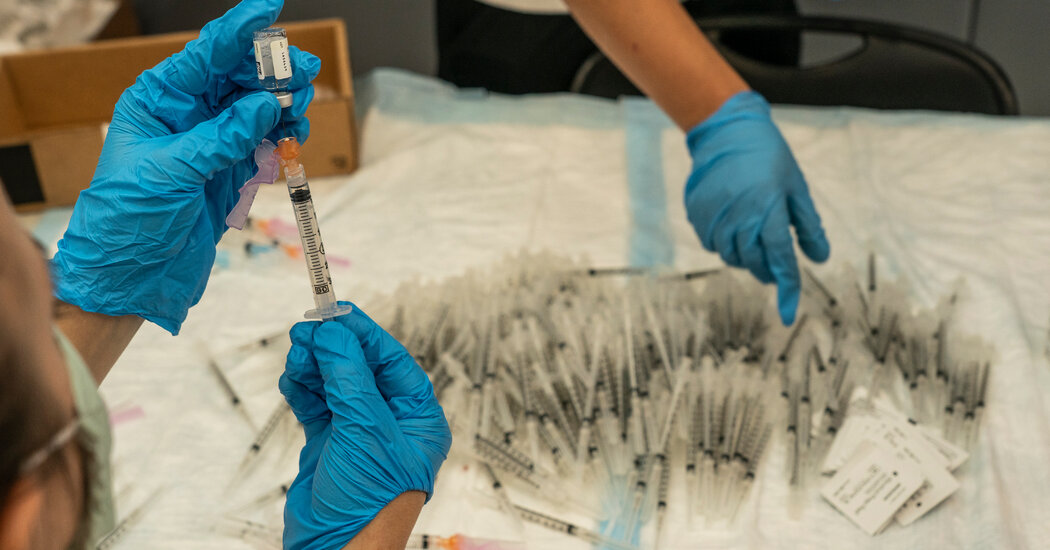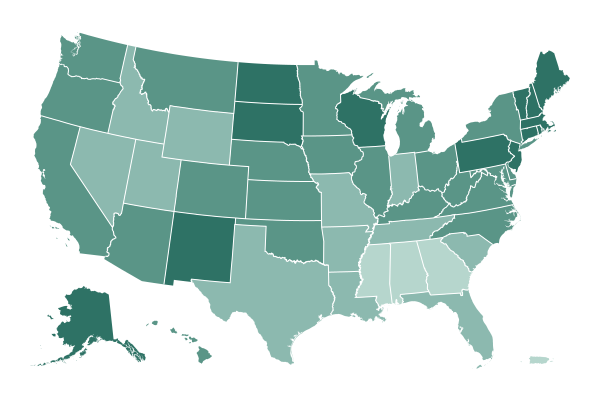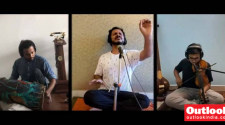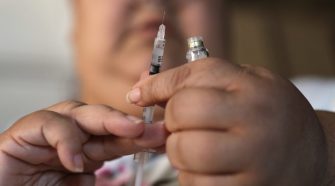Here’s what you need to know:
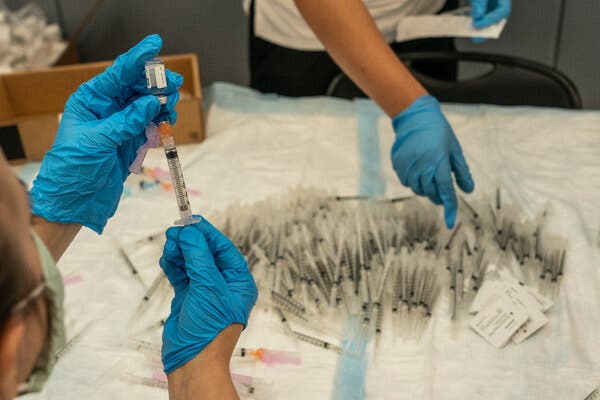
Vaccinations against Covid-19 may be accelerating in the United States, but the Biden administration’s intervention at a troubled plant that ruined millions of vaccine doses, along with the continuing threat of dangerous variants of the coronavirus, suggest that the road to defeating the virus is likely to take many unpredictable twists and turns.
Saturday marked the first time the country reported over four million Covid-19 doses in a single day, bringing the average to more than three million people for the first time, according to data from the Centers for Disease Control and Prevention.
On the same day, the fallout continued over a debacle at a Baltimore contract plant that ruined 15 million doses of the Johnson & Johnson vaccine. The Biden administration put Johnson & Johnson in charge of the facility and moved to stop the facility from making another vaccine, developed by AstraZeneca, senior federal health officials said.
The move comes as Mr. Biden has aggressively pushed to produce enough vaccine doses to cover every American adult by the end of May. It will leave the Baltimore facility solely devoted to making the Johnson & Johnson single-dose vaccine and is meant to avoid future mix-ups, according to two senior federal health officials. Johnson & Johnson confirmed the changes, saying it was “assuming full responsibility” for the vaccine made by Emergent BioSolutions, its manufacturing partner, which accidentally mixed up the ingredients from the two different vaccines.
Federal officials are worried that the mix-up will erode public confidence in the vaccines, just as there’s been a steady increase in the capacity of states to deliver shots into arms. In early March, the nation surpassed an average of two million doses administered each day, up from around 800,000 doses a day in mid-January. Nearly a third of the U.S. population has received at least one dose of a Covid-19 vaccine as more states expand eligibility and production ramps up.
And while new virus cases, deaths and hospitalizations are far below their January peak, the average number of new reported cases has risen 19 percent over the past two weeks. Cases are increasing significantly in many states, particularly in the Midwest and the Northeast, as variants spread.
As some governors relax mask mandates and other restrictions, federal health officials fear that complacency about the virus could bring on another severe wave of infections. Officials in states like Connecticut and Colorado have tried to head that off by accelerating their rollout schedules.
The end of the pandemic could also be postponed by the spread of variants that are potentially more contagious or even deadlier, with new ones appearing in California, New York and Oregon in recent months.
At the moment, most vaccines appear to be effective against the variants. But public health officials are deeply worried that future iterations of the virus may be more resistant, requiring Americans to line up for regular rounds of booster shots or even new vaccines.
“We don’t have evolution on our side,” said Devi Sridhar, a professor of public health at the University of Edinburgh in Scotland. “This pathogen seems to always be changing in a way that makes it harder for us to suppress.”
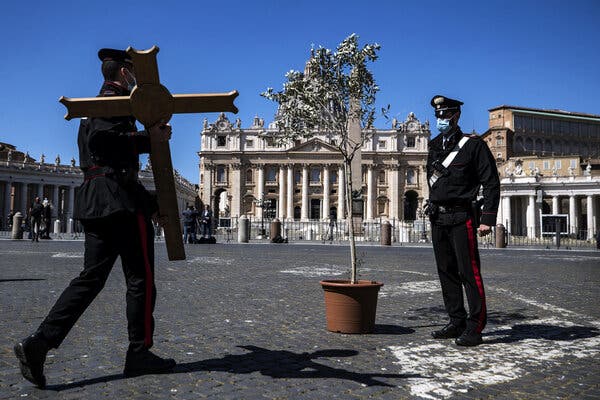
Pope Francis delivered his annual “Urbi et Orbi” (“To the City and to the World”) Easter message to a small group of the faithful inside St. Peter’s Basilica on Sunday, while coronavirus pandemic prohibitions kept the usual audience of about 70,000 pilgrims away from St. Peter’s Square for a second year.
The pope delivered the message after presiding over Easter Mass in the presence of about 200 worshipers.
Francis spoke of the economic and social hardships that many people, and especially the poor, are experiencing because of the pandemic, which has worsened recently in Italy and much of Europe. He also addressed the continuing armed conflicts, unrest and increased military spending in Myanmar, Syria, Yemen, Nigeria and other regions and nations.
As he has in the past, the leader of the world’s 1.3 billion Catholics called on the international community “in a spirit of global responsibility” to ensure that everyone has access to vaccines, which he called “an essential tool” in the fight against the pandemic. Delivery delays had to be overcome to “facilitate their distribution, especially in the poorest countries,” Francis said.
He called on all governments to look after the many people who have lost jobs and experienced economic hardship because of the pandemic, as well as those who lack “adequate social protection.”
“The pandemic has, unfortunately, dramatically increased the number of the poor and the desperation of thousands of people,” he said.
The pope also noted the difficulties of the young, “forced to go long periods without attending school or university or spending time with their friends.” He acknowledged the children who had written meditations for the torchlit Way of the Cross procession on Good Friday, held this year in front of the Basilica instead of the Colosseum, that spoke of loneliness and grief stemming from the pandemic.
“The risen Christ is hope for all who continue to suffer from the pandemic, both the sick and those who have lost a loved one,” Francis said.
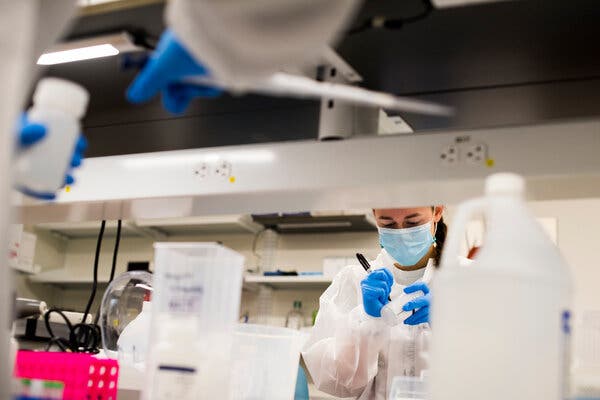
For weeks, the mood in much of the United States has been buoyant. Cases, hospitalizations and deaths from the coronavirus have fallen steeply from their highs, and millions of people are being newly vaccinated every day. Restaurants, shops and schools have reopened. Some states, like Texas and Florida, have abandoned precautions altogether.
But it is increasingly clear that the next few months will be painful. Concerning variants of the virus are spreading, carrying mutations that make the virus both more contagious and in some cases more deadly.
Even as vaccines were authorized late last year, variants were trouncing Britain, South Africa and Brazil. New variants have continued to pop up — in California one week, in New York and Oregon the next. And as they take root, they threaten to postpone an end to the pandemic.
At the moment, most vaccines appear to be effective against the variants. But public health officials are deeply worried that future iterations of the virus may be more resistant, requiring Americans to line up for regular rounds of booster shots or even new vaccines.
“We don’t have evolution on our side,” said Devi Sridhar, a professor of public health at the University of Edinburgh in Scotland. “This pathogen seems to always be changing in a way that makes it harder for us to suppress.”
Health officials see an urgent need to expand vaccinations, which reduce transmission and therefore the virus’s opportunities to mutate. They also acknowledge the importance of tracking the variants. Already, B.1.1.7, the highly contagious variant that walloped Britain and is wreaking havoc in continental Europe, is rising exponentially in the United States.
The variant is about 60 percent more contagious and 67 percent more deadly than the original form of the virus, according to the most recent estimates. Infected people seem to carry more of the B.1.1.7 virus and for longer, said Katrina Lythgoe, an evolutionary biologist at the University of Oxford. “You’re more infectious for more days,” she said.
Limited genetic testing has turned up more than 12,500 U.S. cases, many in Florida and Michigan. As of March 13, the variant accounted for about 27 percent of new cases nationwide, up from just 1 percent in early February.
“The best way to think about B.1.1.7 and other variants is to treat them as separate epidemics,” said Sebastian Funk, a professor of infectious disease dynamics at the London School of Hygiene and Tropical Medicine. “We’re really kind of obscuring the view by adding them all up to give an overall number of cases.”
Other variants identified in South Africa and Brazil, as well as some virus versions first seen in the United States, have been slower to spread. But they, too, are worrisome, because they contain a mutation that diminishes the vaccines’ effectiveness. Just this week, an outbreak of P.1, the variant that crushed Brazil, forced a shutdown of the Whistler Blackcomb ski resort in British Columbia.

A beloved superfan of the University of Alabama’s men’s basketball team died from complications of Covid-19, his mother said Saturday.
Luke Ratliff rarely missed a game and was known by the Crimson Tide community as “Fluffopotamus.” He died Friday evening, his mother, Pamela Ratliff, said. A senior at the University of Alabama, Mr. Ratliff was set to graduate in August. He was 23.
“He had a personality that was bigger than this world, never met a stranger,” Ms. Ratliff said on Saturday.
Mr. Ratliff traveled to the men’s N.C.A.A. basketball tournament in Indianapolis to cheer on the Crimson Tide until they lost to U.C.L.A. last weekend. He had recently gone through rapid coronavirus testing multiple times, Ms. Ratliff said, and the tests had come back negative.
“He didn’t have any of the typical symptoms until the cough set in this week,” she said.
Mr. Ratliff was eventually treated for bronchitis and it was later discovered he had contracted Covid-19.
Fans were allowed to fill venues for the tournament up to 25 percent of their normal capacity. In response to Mr. Ratliff’s death, the Marion County Public Health Department said in a statement that it would be investigating to determine “if anyone in Indianapolis may have been exposed to Covid-19 by any Alabama resident who visited Indianapolis in recent days.”
“We continue to encourage residents and visitors to practice the simple and important habits that keep us all safe: wearing a mask, washing hands, and social distancing,” the department said.
There has been an outpouring of tributes from the Crimson Tide community celebrating Mr. Ratliff.
“We will forever remember our #1 fan,” Alabama Men’s Basketball said on Twitter. “We love you.”
Nate Oats, Alabama’s coach, said Mr. Ratliff’s death “doesn’t seem real.”
“Fluff has been our biggest supporter since day one,” Oats said on Twitter. “Put all he had into our program. Loved sharing this ride with him. You’ll be missed dearly my man! Wish we had one more victory cigar and hug together. Roll Tide Forever.”
Mr. Ratliff described his love for college basketball to The Tuscaloosa News earlier this year.
“College basketball is different because it’s literally right in front of you: You can see it, you can touch it, you can go to it 16 home games a year. It’s tangible, that’s what’s endeared me to it,” Mr. Ratliff told the outlet, discussing his preference for the game over football.
On March 31, Mr. Ratliff chronicled the Alabama men’s basketball season on Twitter, posting his own personal highlights from the season.
“I will finish college having attended 44 of the tide’s past 45 conference and postseason games, including 42 in a row,” Mr. Ratliff wrote. “What a freaking ride it’s been.”
Mr. Ratliff is survived by his parents and two brothers.
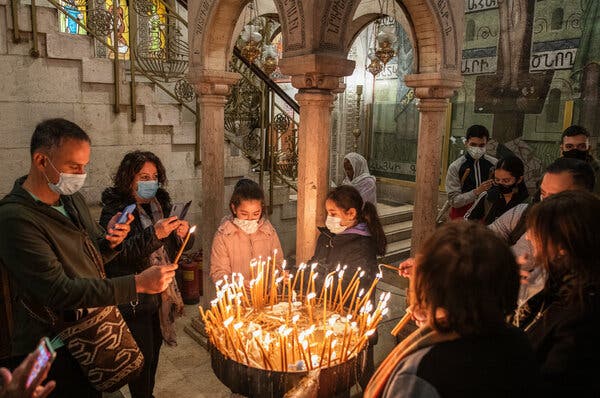
JERUSALEM — In the Old City of Jerusalem on Friday morning, in the alleys of the Christian quarter, it was as if the pandemic had never happened.
The winding passageways that form the Via Dolorosa, along which Christians believe Jesus hauled his cross toward his crucifixion, were packed with over 1,000 worshipers. The Good Friday procession, where the faithful retrace the route Jesus is said to have taken, was back.
“It is like a miracle,” said the Rev. Amjad Sabbara, a Roman Catholic priest who helped lead the procession. “We’re not doing this online. We’re seeing the people in front of us.”
Pandemic restrictions forced the cancellation of last year’s ceremony and required priests to hold services without congregants present. Now, thanks to Israel’s world-leading vaccine rollout, religious life in Jerusalem is edging back to normal. And on Friday, that brought crowds back to the city’s streets, and relief to even one of Christianity’s most solemn commemorations: the Good Friday procession.
For much of the past year, the pandemic kept the Old City eerily empty. But with nearly 60 percent of Israeli residents fully vaccinated, the city’s streets were once again thrumming, even if international tourists were still absent.
At the gathering point for the procession on Friday, there was scarcely space to stand. The crowd moved slowly off, singing mournful hymns as they proceeded along what Christians consider a re-enactment of Jesus’ last steps.
In the alley outside the chapel of St. Simon of Cyrene, the marchers trailed their fingers over an ocher limestone in the chapel wall. According to tradition, Jesus steadied himself against the stone after a stumble.
Finally, they reached the Church of the Holy Sepulcher, which believers think was the site of Christ’s crucifixion, burial and, ultimately, resurrection.
For some, the Good Friday procession carried even more resonance than usual — its themes of suffering, redemption and renewal seeming particularly symbolic as the end of a deadly pandemic appeared finally in sight.
“We have gained hope again,” said George Halis, 24, who is studying to be a priest and who lives in the Old City. “Last year was like a darkness that came over all of earth.”
But for now, that togetherness continues to face limits. There are still restrictions on the number of worshipers at Easter services. Masks are still a legal requirement. And foreigners still need an exemption to enter Israel — keeping out thousands of pilgrims, at the expense of local shopkeepers who depend on their business.
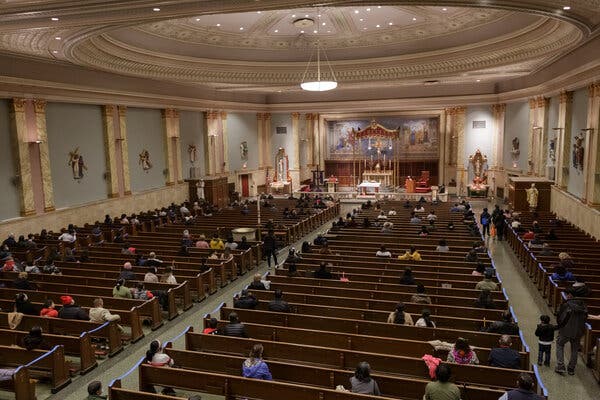
The Rev. Henry Torres told his parishioners, who had gathered on Palm Sunday in socially distanced rows of half-empty pews, that God had not abandoned them.
The coronavirus had killed dozens of regulars at the church, St. Sebastian Roman Catholic Church in Queens, N.Y., and the pandemic forced it to close its doors for months last year. But the parishioners were there now, he said, which was a sign of hope.
“Even through difficulties, God is at work,” Father Torres said. “Even when people are suffering, even if it may seem that God is silent, that does not mean that God is absent.”
That is a message that many Christians — and the cash-strapped churches that minister to them — are eager to believe this Easter, as the springtime celebration of hope and renewal on Sunday coincides with rising vaccination rates and the promise of a return to something resembling normal life.
Religious services during the Holy Week holidays, which began on Palm Sunday and end on Easter, are among the most well-attended of the year, and this year they offer churches a chance to begin rebuilding their flocks and regaining their financial health. But the question of whether people will return is a crucial one.
Across New York City, many churches have still not reopened despite state rules that would allow them to do so.
The Rev. Dr. Calvin O. Butts III, pastor at Abyssinian Baptist Church in Harlem, a nationally prominent Black church, said concerns over the virus, and its disproportionate impact on the Black community, would keep his church from reopening until at least the fall.
Nicholas Richardson, a spokesman for the Episcopal Diocese of New York, said many of its churches had also not reopened. When the diocese introduced a program last fall to allow its 190 parishes to pay a reduced tithe to the diocese, roughly half of them applied.
“It varies church by church,” he said. “Pledges are not necessarily dramatically down, but donations given to the collection plate are hopelessly down.”
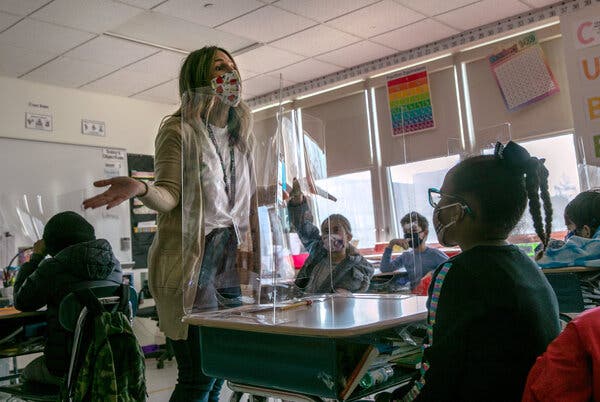
A bipartisan group of governors have decided it is time to get students back into classrooms, despite union resistance and bureaucratic hesitancy.
Democratic governors in Oregon, California, New Mexico and North Carolina, and Republicans in Arizona, Iowa, West Virginia and New Hampshire, among other states, have all taken steps to prod, and sometimes force, school districts to open.
The result has been a major increase in the number of students who now have the option of attending school in-person, or will in the next month.
According to a school reopening tracker created by the American Enterprise Institute, 7 percent of the more than 8,000 districts being tracked were operating fully remotely on March 22, the lowest percentage since the tracker was started in November. Forty-one percent of districts were offering full-time in-person instruction, the highest percentage in that time. Those findings have been echoed by other surveys.
In interviews, several governors described the factors motivating their decision to push districts to reopen, including the substantial evidence that there is little virus transmission in schools if mitigation measures are followed, the decline in overall cases from their January peak, and, most of all, the urgency of getting students back in classrooms before the school year ends.
“Every day is an eternity for a young person,” said Jay Inslee, the Democratic governor of Washington, who declared a state of emergency related to child and adolescent mental health and banned fully virtual instruction starting in April. “We just could not wait any further.”
In the weeks since most of the governors acted, nationwide cases have started to rise again, which could complicate the effort to get children back in school. In areas where cases are increasing sharply, like Michigan, some schools have had to revert to remote learning temporarily because so many students were in quarantine.
But for the time being, at least, the moves by these governors have yielded significant results.
In Washington, before Mr. Inslee issued his proclamation, the state’s largest district, Seattle Public Schools, was locked in a standoff with its teachers’ union over a reopening plan. Days after Mr. Inslee announced he would require districts to bring students back at least part time, the two sides reached an agreement for all preschool and elementary school students and some older students with disabilities to return by April 5.
In Ohio, nearly half of all students were in districts that were fully remote at the beginning of 2021. By March 1, that number was down to 4 percent, and it has shrunk further in the weeks since.
“It’s worked exceedingly well,” Mike DeWine, the Republican governor of Ohio, said of his decision to offer vaccines to Ohio districts that pledged to reopen. “We’ve got these kids back in school.”
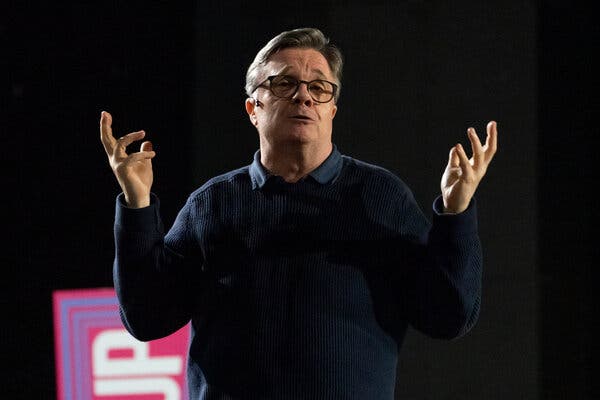
Three hundred and eighty-seven days after Broadway went dark, a faint light started to glimmer on Saturday.
There were just two performers — the tap dancer Savion Glover and the actor Nathan Lane, both of them Tony Award winners — on a bare Broadway stage. But together they conjured up decades of theater lore.
The 36-minute event, before a masked audience of 150 scattered across an auditorium with 1,700 seats, was the first such experiment since the coronavirus pandemic forced all 41 Broadway houses to close on March 12, 2020.
Glover performed an improvisational song-and-dance number in which he seemed to summon specters of productions past — “A Chorus Line,” “The Tap Dance Kid,” “Dreamgirls,” “42nd Street.” He also made a pointed reference to Black life in the U.S., interpolating the phrase “knee-on-your-neck America” into a song from “West Side Story.”
Lane, one of Broadway’s biggest stars, performed a comedic monologue by Paul Rudnick, in which he portrayed a die-hard theater fan who dreams (or was it real?) that a parade of Broadway stars, led by Hugh Jackman, Patti LuPone and Audra McDonald, arrive at his rent-controlled apartment and proceed to vie for his attention while dishily one-upping one other.
The St. James, a city historic landmark built in 1927, was chosen in part because it’s big — and empty. The theater also has a modern HVAC system, and its air filters were upgraded during the pandemic in an effort to reduce the spread of airborne viruses.
The event, while free, was invitation only, and the invitations went mostly to workers for two theater industry social service organizations, the Actors Fund and Broadway Cares/Equity Fights AIDS.




